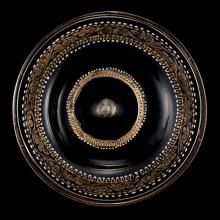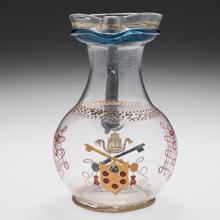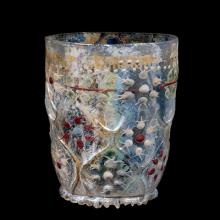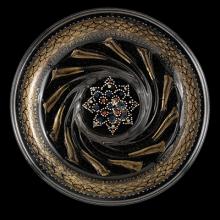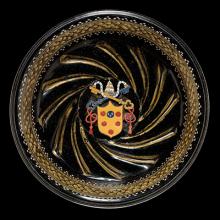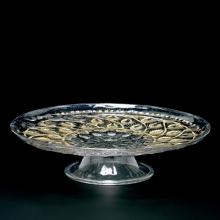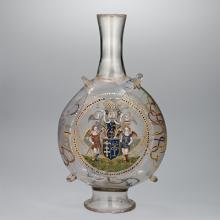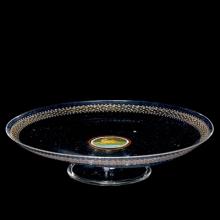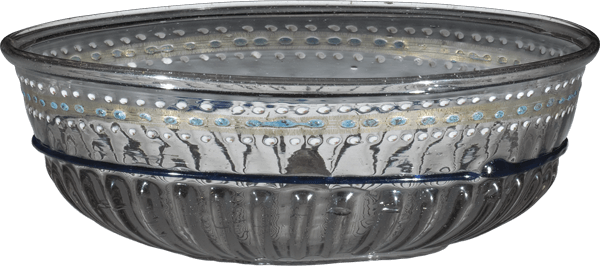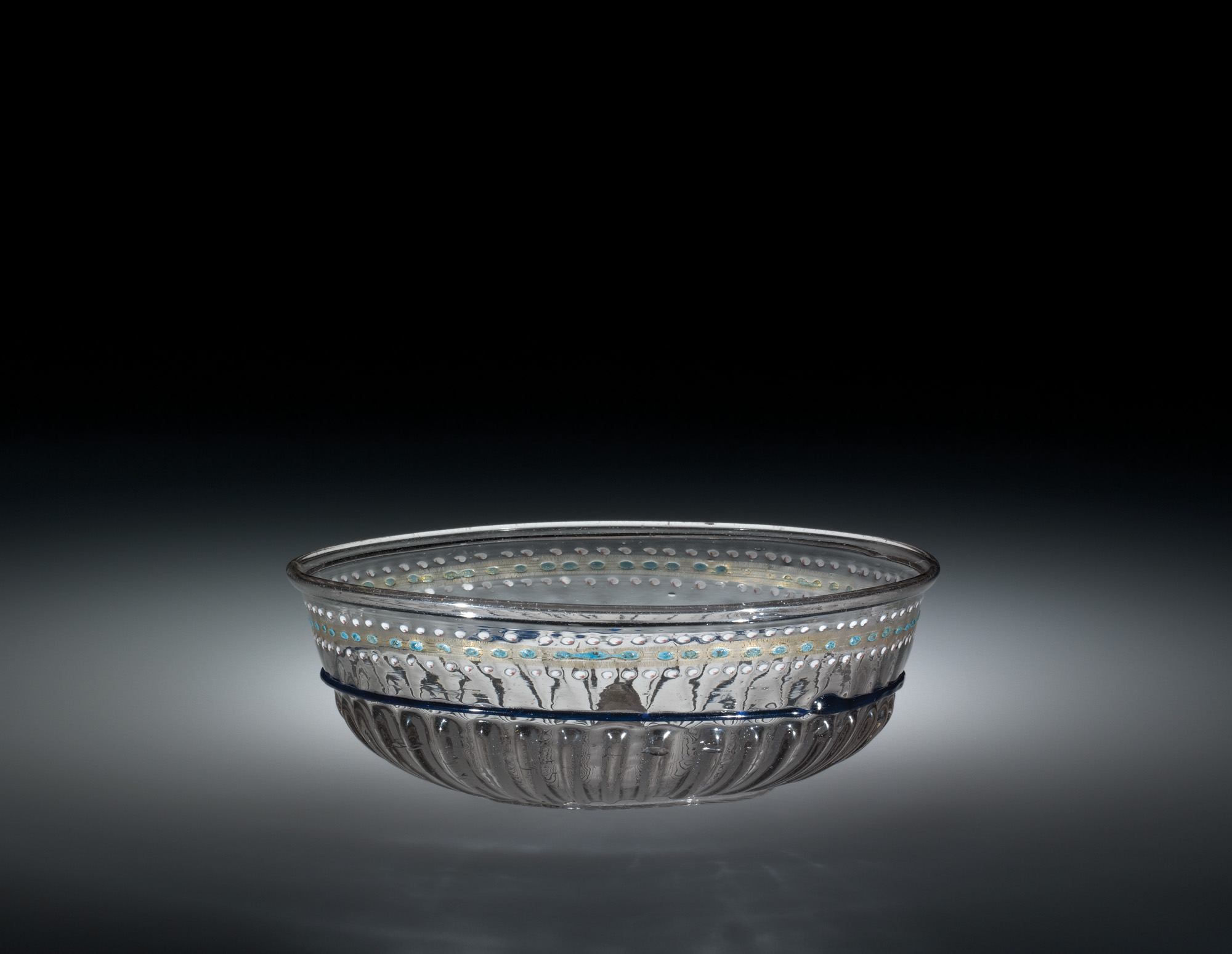Enameled Bowl
Enameled Bowl
The bowl presented in this video is made using mezza-stampatura. It is gilded and enameled, and it has a folded edge.
Enamels consist of intensely colored glass (or colorless glass that has been mixed with a metallic oxide) that has been finely ground and mixed with a liquid medium to facilitate painting. After its application to a cooled object, the decoration is fired at a high temperature for permanence. Gold is usually applied in the form of leaf or slightly thicker foil; the gold and enamels are fired together.
Transcript
The shape of the finished bowl will be very different from that of the blank. The dotted line shows the shape of the blank. The glassblowing begins with gathering glass on the end of the metal blowpipe. This is done in two stages. It’s begun with a small gather, and after cooling, a larger gather is made. The block, a wood tool soaked in water, is used to make the glass perfectly round and concentric with the blowpipe. Air is blown in, and the bubble forms. Blowing continues as the block is gently touched to the bottom of the bubble. The goal is to create an oblate spheroid. Eventually this bubble will be separated from the blowpipe, and it’s done so at this neck or constriction that’s being created. This bubble must be exactly the size and shape of the inside of the 40-ribbed mold. A mass of glass is lowered into the mold, cut free of its gathering rod, and the bubble, hot but stiff, is pressed onto the mass of glass. After reheating, the upper threshold of the overlay is straightened; the bubble is gently rubbed with the cool metal jacks while blowing continues. This increases the diameter of the oblate spheroid. A gather of glass is added to the base. The bottom is flattened, and a kick is created. The site where the punty will be attached is cooled. The vessel is transferred to the punty. The neck is broken by squeezing it with the cool pincers, tapping the blowpipe. The opening is now ready for reheating. After the glass softens, the jacks are used, and the soffietta is used to create the final shape. A small amount of blue glass is added in the form of a thin trail. The soffietta is used to inflate the shoulder. This bowl has a folded edge, and it’s an external or outer fold. This is done by making an acute flare and then pushing the edge onto the shoulder of the bowl. The glass is thin and has to be reheated frequently. The jacks are used to give the blank its final shape. The blank is broken free of the blowpipe and placed in the annealing oven for slow cooling. The decoration process begins with making a mixture of gum arabic and water, and this will be used as an adhesive to attach the gold foil. The gold is gently pressed onto the slightly tacky adhesive, the backing peeled away. The borders are trimmed. Decorative grooves are cut into the gold leaf. A toothlike (or denticulate) pattern is carved into the gold, and the enameling process begins. Intensively colored glass is pulverized finely in a mortar and pestle and then mixed with a little bit of gum arabic and water. The viscous mixture can then be painted onto the vessel. The firing process begins with the dried blank being placed in an annealing oven and gradually heated to a temperature of about 1000 degrees Fahrenheit. A punty is reattached to the base. The vessel is reintroduced to the glass furnace. Eventually the vessel begins to soften. Tools are used to expand the diameter of the vessel. The glass is rather thin, cools quickly, and must be reheated frequently. The decorated blank—the finished object—is yet again placed in the annealing oven and broken free of the punty. After cooling, it can be seen that where the glass changed size the most, the dots stretched. The inside surface is slightly irregular—the dots heat faster than the clear glass and soften quicker. There’s a double punty mark: the first from the making of the blank, the second from the firing of the decoration.
See all: Objects and Techniques

